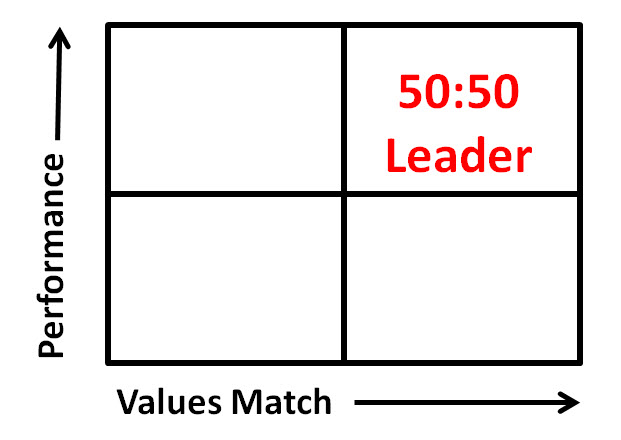I’ve yet to encounter an organization whose stated value is ‘workplace harassment’. Yet, the sexual assault, abuse and harassment stories shared under the #MeToo hashtag on social media this week would almost suggest that’s the case. In a healthy workplace, values and behaviours closely align.
Align behaviours and values: Walk the talk
Values are words. Behaviours are actions. A corporate value of ‘mutual respect’ needs to be followed up with respectful workplace behaviours. To do otherwise is failure, whether of the small or large variety.
Culture starts at the top. In his book, The Culture Engine: A Framework for Driving Results, Inspiring Your Employees, and Transforming Your Workplace, Chris Edmonds leaders wants to spend half their time managing for performance, and half their time managing the quality of workplace relationships and interactions; 50-50 leaders. Leaders that don’t should be asked to leave.
Managing for performance pertains to results and profits. Managing the quality of relationships asks “how well does my behaviour align with stated company values?”
Through his work, Edmonds observed how companies such as Southwest Airlines and Zappos, and many others, treat the employee experience as important as performance and profits.
To develop a culture that aligns values and behaviours, Edmonds suggest this path:
- Study the best practices of high-performing, values-aligned organizations.
- Gather frequent data on the condition of your team or company’s culture (through observation, employee surveys, exit interviews, frequent informal conversations, and other means).
- Close identified gaps between your current culture and the high-performance, values-aligned culture you and your employees deserve.
Defining valued behaviours
Edmonds further goes on to provide a value-definition-behaviours template to define behaviours; behaviours that are observable, tangible and measurable. Using the value of mutual respect as an example (provided by Edmonds), the template fills out as follows:
Value: The one- or two- word value title.
Example: Mutual Respect
Definition: A two- or three-sentence description that clearly states what this value means in your workplace;
Example: I work with my customers (internal and external) openly, honestly, sincerely, and ethically. I follow through on my commitments and expect the same from others.
Behaviours: These are “I” statements that explain exactly how you expect leaders and employees to demonstrate this value in your workplace. List not more than four behaviours per value; e.g.,
- I trust that everyone has the customers’ and company’s best interests in mind, so I attack problems and processes, not people.
- I don’t take it personally when someone challenges a process I own. I listen to the input and implement changes to improve the process.
- I do not lie, betray a confidence, stretch the truth, or withhold information from a peer, customer, or stakeholder.
- If I am unable to keep a commitment or meet a deadline, I immediately inform all people who will be impacted.
Measuring and applying valued behaviours
Through observation and feedback mechanisms (e.g., surveys), behaviours are measured. Managers, team members, peers, coaches, customers, and others, are called on to provide their assessments.
With HR help, valued behaviours can be embedded into employee hiring, assessment and development processes, and become a cultural fixture.
What’s one key thing your organization does to reduce the gap between values and behaviours?



Speak Your Mind